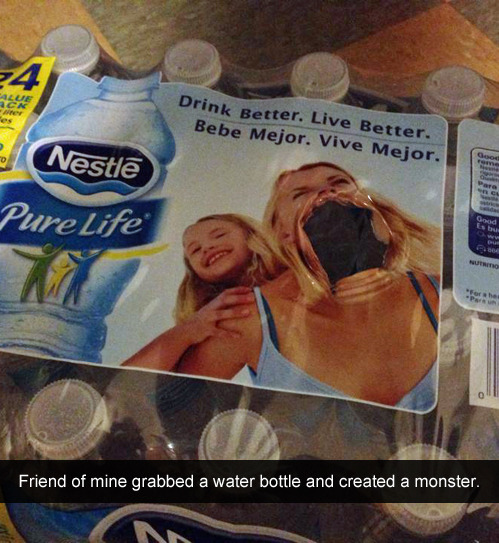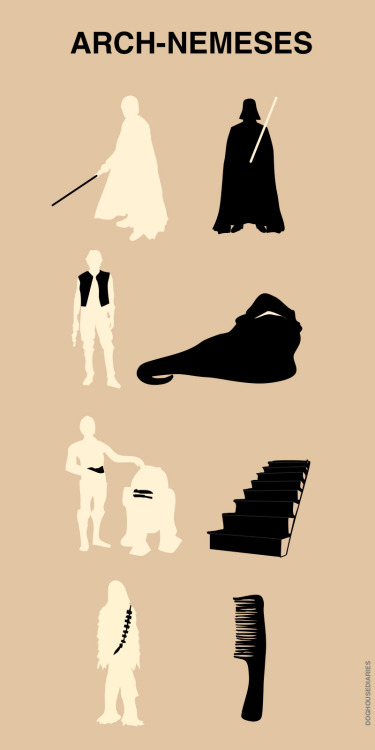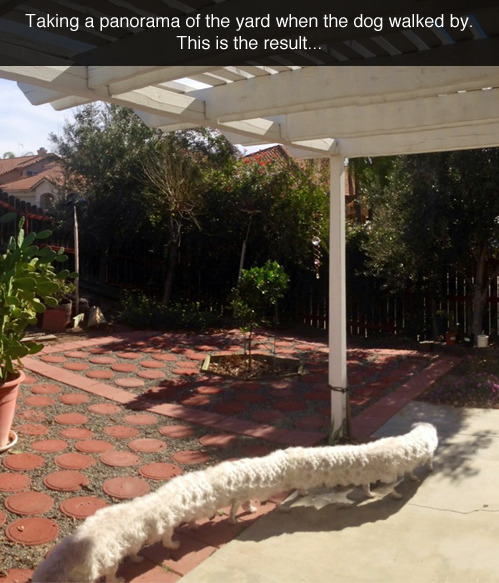Despite yesterday's jokey title, "Prospecting Lot," I'd like to make a point very clearly: this is private property. As I mentioned in that post, I've stopped here several times now, and no one has made an issue of it. But industrial rock companies/mines such as this are quite rightfully worried about liabilities with respect to people who do dumb things on their property. You'll notice beyond the sign, there's a security checkpoint. I have not pestered those folks, just pulled out in the flat area closest to the main road, and picked around in the spoil piles for a while, then left. Certainly, if someone approached and asked what I was up to, I could give a true and well-spoken explanation of why I find this spot of interest, but if they asked me to leave, I would do so without a fuss. Visiting sites like this is a privilege, not a right. I do think if I was planning on visiting this site with a group I might use the contact information above to get an ahead-of-time okay. Who knows? They might actually like to show off their work to a bunch of aspiring geologists- though I make no promises.
I should point out that operations like this, supplying sand and other aggregate, are largely off of geologists' radar in terms of geologic resources: we tend to think of fossil fuels and metals. However, the net expenditures on "mundane" resources such as this probably approach those of everything else combined. By their nature, bulk resources like aggregate tend to be localized: they aren't amenable to transport over large distances. Thus they tend to be dispersed in smaller businesses in smaller markets. There will never be an "Exxon" of sand and gravel, but that doesn't mean that these innumerable smaller businesses are insignificant or unimportant. They're just smaller and don't pick at the consciousness in the way larger companies do.
I was browsing around yesterday, and found an interesting article on the resource being acquired here: apparently, Green Diamond is processing the Hanna Nickle Mine's slag- waste from smelting- into commercial sand products. I find great satisfaction in the idea that one operation's garbage has become another's bread and butter.
Photo unmodified. May 9, 2013. FlashEarth Location. Indexed.
Followup: I've been meaning to mention for a couple days, Ron Schott has updated the Geo 365 Map with this years' posts- up through yesterday (at 2 PM PST).
Miscellaneous thoughts on politics, people, math, science and other cool (if sometimes frustrating) stuff from somewhere near my favorite coffee shop.
Saturday, February 1, 2014
Friday, January 31, 2014
Geo 730: Jan. 31, Day 396: Prospecting Lot
A pair of stitched photos showing the parking area at the former Hanna Nickle Mine west of Riddle, Oregon. To the far left, that pile of rocks is worthwhile picking through for two reasons. The eye-opener on this trip, for me, was realizing how exemplary and fresh the peridotite was. I've also stopped here briefly a couple times (in addition to the formal field trip/tour with Cy Fields, in about 1986) and have been able to reliably find little fragments of the ore "mineral." The reason for the quotes is that garnierite is a mish-mash of other minerals and amorphous solids. It has some fairly consistent physical properties- notably its green color- but its composition is not defined; it's not a true mineral.
Photo unmodified. May 9, 2013. FlashEarth Location. Indexed.
Photo unmodified. May 9, 2013. FlashEarth Location. Indexed.
Thursday, January 30, 2014
Geo 730: Jan. 30, Day 395: Riddle Me This...
We're at the base of Nickle Mountain, west of Riddle, Oregon in this photo. The lens cap (52 mm) is resting on a block of fresh, unaltered peridotite, and the lighter rock to the upper left is probably mostly silica/quartz.
The Hanna Nickle Mine, closed in 1987, is an oddball. The short and sweet description that will be easy to understand for geologists is that it's a nickle-rich laterite. However, I imagine that's completely opaque to most people, so a longer-winded explanation is in order. The bedrock here is Josephine Ophiolite peridotite, composed mostly of olivine and pyroxene. The general formula for olivine is (Fe,Mg)2SiO4. That means that any proportion of Fe to Mg can exist along that continuum, from 100% of one to 100% of the other. Now, what that general formula doesn't tell you is that other metals can substitute in for either the Fe or Mg, generally in small amounts, but up to maybe 5 or 6 percent of the total, which is exactly what happened with nickle here.
Millions of years ago (I don't know if a date was ever assigned with any confidence), a deep bedrock slump took place on this mountain, creating a depression near its summit, and a slump plane (technically, a shallow fault) that allowed internal drainage. So weathering took place as usual, but "erosion" occurred only by complete solution; no clastic material was transported off the area.
We tend to think of silica/quartz as insoluble at ambient surface conditions, but of course, everything is soluble to some degree. And there are a number of metal oxides that are even less soluble than that of silicon. Among them are aluminum, iron and... nickle! (As an aside, cobalt is another one these highly insoluble oxides; I was involved for a period of time in assessing the feasibility of a cobalt laterite prospect.)As I've mentioned before There's precious little alumina in peridotite, which is why weathering it does not produce clay minerals. However, there's plenty of iron oxides, and after dissolution of silica and magnesium oxides, a commercially attractive concentration of nickle oxides as well. Deposits such as this, where the bulk of the initial rock composition has been removed by solution, leaving behind only the most insoluble components, are referred to as laterites. The most commonly mined laterites are, in fact, bauxites, or aluminum ore. In this case, as I recall, the smelting process resulted in a pair of mutually immiscible mattes, one iron rich, the other nickle rich. The two were separated, and sent elsewhere for further refining.
For many years, the nickle mine at Riddle was the only one operating in the lower 48. I've never been certain whether there are or were any operating in Alaska. In the years prior to its closure, I know the company was looking at importing a similar ore, I think from New Caledonia. At the time, I thought the idea of transporting bulk ore across the Pacific, and inland across the Klamaths, for the initial smelting and refinement, didn't make much sense. Apparently I was correct in that assessment.
By the way: the greenish splotches on the lighter rock? That's the nickle ore: garnierite.
Photo unmodified. May 9, 2013. FlashEarth Location. Indexed.
The Hanna Nickle Mine, closed in 1987, is an oddball. The short and sweet description that will be easy to understand for geologists is that it's a nickle-rich laterite. However, I imagine that's completely opaque to most people, so a longer-winded explanation is in order. The bedrock here is Josephine Ophiolite peridotite, composed mostly of olivine and pyroxene. The general formula for olivine is (Fe,Mg)2SiO4. That means that any proportion of Fe to Mg can exist along that continuum, from 100% of one to 100% of the other. Now, what that general formula doesn't tell you is that other metals can substitute in for either the Fe or Mg, generally in small amounts, but up to maybe 5 or 6 percent of the total, which is exactly what happened with nickle here.
Millions of years ago (I don't know if a date was ever assigned with any confidence), a deep bedrock slump took place on this mountain, creating a depression near its summit, and a slump plane (technically, a shallow fault) that allowed internal drainage. So weathering took place as usual, but "erosion" occurred only by complete solution; no clastic material was transported off the area.
We tend to think of silica/quartz as insoluble at ambient surface conditions, but of course, everything is soluble to some degree. And there are a number of metal oxides that are even less soluble than that of silicon. Among them are aluminum, iron and... nickle! (As an aside, cobalt is another one these highly insoluble oxides; I was involved for a period of time in assessing the feasibility of a cobalt laterite prospect.)
For many years, the nickle mine at Riddle was the only one operating in the lower 48. I've never been certain whether there are or were any operating in Alaska. In the years prior to its closure, I know the company was looking at importing a similar ore, I think from New Caledonia. At the time, I thought the idea of transporting bulk ore across the Pacific, and inland across the Klamaths, for the initial smelting and refinement, didn't make much sense. Apparently I was correct in that assessment.
By the way: the greenish splotches on the lighter rock? That's the nickle ore: garnierite.
Photo unmodified. May 9, 2013. FlashEarth Location. Indexed.
Wednesday, January 29, 2014
Geo 730: Jan. 29, Day 394: What's On The Slate
A final shot of the Galice Formation slate along Route 199, just southwest of the major tunnel on that route.
I've spent this month so far on the Josephine Ophiolite, describing the typical sequence of rocks exposed in such environments. From the bottom, these include a cumulate ultramafic peridotite of mantle affinity, a less mafic cumulate gabbro representing the base of oceanic crust, several kilometers of sheeted dikes, consisting of dikes intruding dikes intruding dikes, to the point where there is no longer any "original" host rock left, simply younger dikes intruding older dikes. Over those lie a few hundred meters of pillow basalt and other volcanic rock, which in turn is typically buried by a variable thickness of sediment of one form or another. It's my current understanding that the overlying sediment (metamorphosed in the case of the rocks above) are not considered to be a part of the "ophiolite" proper- that is, only the igneous components are considered as part of the ophiolite. That being said, the sedimentary cover is an inevitable follow-up to that sequence: I see no way that it could be avoided. I'm not saying that it "should" be considered a part of the ophiolite, just that it seems to me as if such sediment will always follow the creation of a new segment of oceanic crust.
While the sequence as presented so far is disjointed, that's unavoidable. The Josephine is cut by several faults with major vertical offset, so the traveler hops and skips up and down the sequence as they move in an east-west direction. The only part of the above sequence that we didn't stop at was one or more representing the pillow basalt/sea floor volcanics. We did see highly altered peridotite at Patrick Creek, but we've not yet seen a good example of relatively fresh ultramafics. Starting tomorrow, I'm going to skip the rest of March 8, and zip forward to later in the day of March 9, when we looked at some really nice remnants of fresh peridotite at an oddball nickle mine, farther north in the Josephine.
Photo unmodified. May 8, 2013. FlashEarth Location. Indexed.
I've spent this month so far on the Josephine Ophiolite, describing the typical sequence of rocks exposed in such environments. From the bottom, these include a cumulate ultramafic peridotite of mantle affinity, a less mafic cumulate gabbro representing the base of oceanic crust, several kilometers of sheeted dikes, consisting of dikes intruding dikes intruding dikes, to the point where there is no longer any "original" host rock left, simply younger dikes intruding older dikes. Over those lie a few hundred meters of pillow basalt and other volcanic rock, which in turn is typically buried by a variable thickness of sediment of one form or another. It's my current understanding that the overlying sediment (metamorphosed in the case of the rocks above) are not considered to be a part of the "ophiolite" proper- that is, only the igneous components are considered as part of the ophiolite. That being said, the sedimentary cover is an inevitable follow-up to that sequence: I see no way that it could be avoided. I'm not saying that it "should" be considered a part of the ophiolite, just that it seems to me as if such sediment will always follow the creation of a new segment of oceanic crust.
While the sequence as presented so far is disjointed, that's unavoidable. The Josephine is cut by several faults with major vertical offset, so the traveler hops and skips up and down the sequence as they move in an east-west direction. The only part of the above sequence that we didn't stop at was one or more representing the pillow basalt/sea floor volcanics. We did see highly altered peridotite at Patrick Creek, but we've not yet seen a good example of relatively fresh ultramafics. Starting tomorrow, I'm going to skip the rest of March 8, and zip forward to later in the day of March 9, when we looked at some really nice remnants of fresh peridotite at an oddball nickle mine, farther north in the Josephine.
Photo unmodified. May 8, 2013. FlashEarth Location. Indexed.
Tuesday, January 28, 2014
Geo 730: Jan. 28, Day 393: Rock Rainbow
Another shot of what I believe is secondary mineralization caused by weathering of pyrite and reprecipitation of metallic minerals on a cleavage plane of Galice slate. The rainbow colors are quite pretty.
Photo unmodified. May 8, 2013. FlashEarth Location. Indexed.
Photo unmodified. May 8, 2013. FlashEarth Location. Indexed.
Monday, January 27, 2014
Geo 730: Jan. 27, Day 392: Terraced Roadcut
Looking across 199, Dana shot this photo of a roadcut leading up (or down, it looks like) to the tunnel. If the strike and dip of the Galice on that side of the road is similar to that of this side (which is by no means assured), what might look like near-horizontal bedding is actually a happenstance of the slope of the cut intersecting with the slate's foliation at an orientation that is close to strike. However, the eye-catching thing to me here is the pair of pronounced terraces, or flat berms, cut into the hillside in the middle and upper portion of the slope. This is a common practice in large cuts, and is engineered for two reasons that I know of. First, it forces removal of more mass from higher points, and thus helps prevent oversteepening, decreasing the risk of slope failure. Second, as rock weathers and breaks up, some amount of rockfalls and raveling are inevitable. The flat berms help capture a lot of that mass movement, and prevent it from reaching and obstructing the roadway.
Photo by Dana Hunter, unmodified. May 8, 2013. FlashEarth Location. Indexed.
Photo by Dana Hunter, unmodified. May 8, 2013. FlashEarth Location. Indexed.
Sunday, January 26, 2014
Sunday Funnies: Play It Cool Edition
Bits and Pieces
Funny to Me
Bits and Pieces
Texts from TNG
The Awkward Yeti
Bad Newspaper
Are You Talking to Meme?
Happle Tea
"Trying to eat breakfast the morning of my defense" What Should We Call Grad School?
Gunshow
xkcd
Sober in a Nightclub
Sober in a Nightclub
Bits and Pieces
Tastefully Offensive
Beatrice the Biologist
Cheezburger
Savage Chickens
Journal of Are You Fucking Kidding!?
Tree Lobsters
Berkley Mews
Are You Talking to Meme?
Bizarro There are five comics at this link; the above is my favorite, but they're all pretty funny.
Are You Talking to Meme?
Darius Whiteplume
Jim Benton
Cheezburger
Cyanide and Happiness
"My blueberry muffin looks exactly like my dog." Sofa Pizza
Matt Bors
Funny to Me
Funny to Me
See Mike Draw
Texts from TNG
Bits and Pieces
Tastefully Offensive
Savage Chickens
Wondermark
Darius Whiteplume
Julia Segal
Texts from TNG
Bad Newspaper They'll get it out one of these days!
Spud Comics
Sober in a Nightclub
Cyanide and Happiness
Owl Turd Comix
Blackadder



















































